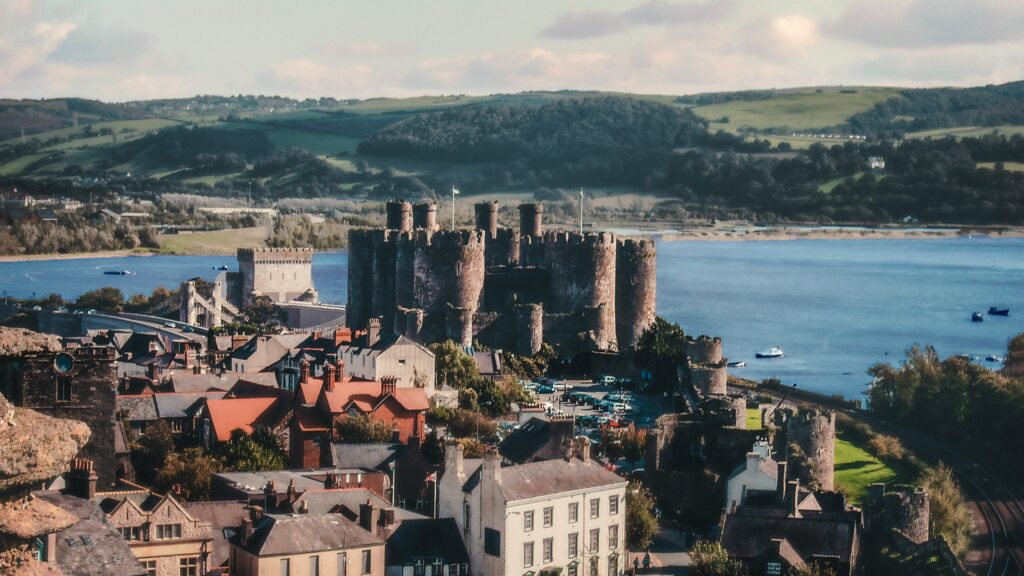John Hilling explores the history of Welsh architecture and how it has developed
This article is drawn from an address by John B. Hilling, author of The Architecture of Wales – from the first to the twenty-first century, at the book’s recent launch at the Temple of Peace in Cardiff. The book is published by the University of Wales Press, in cooperation with the Royal Society of Architects in Wales.
My first attempt to write on the subject of Welsh architecture was published way back in 1976, as The Historic Architecture of Wales. At that time, comparatively little had been written about any kind of architecture in Wales, at least architecture from a Welsh point of view. As a result, my book became the first to be published on the architecture of Wales as a whole.
The prospect of updating a 40-year old book was somewhat daunting. After all, a large amount had been written during the interim period on all aspects of architecture in Wales – from the writing up of numerous archaeological excavations to complete books on the architecture of individual Welsh counties. At the same time, I was uncomfortable about writing on the most recent architecture – it felt too close. Simon Unwin has, therefore, dealt with the period from 1986.
The Welshness of Welsh architecture is a subject that interests me, because the original book was criticized for being too Welsh.
Peter Howell, writing about the original book, said that “inevitably it turns out to be more of ‘historic architecture in Wales’, rather than ‘of Wales’ ”. To rub this in, he added: “although the best buildings in Wales may not really be ‘of Wales’, Welshmen may at least feel proud that they are in Wales”!
And, when the architectural critic J. M. Richards reviewed the book, he asked, “is there such a thing as Welsh Architecture?” Jan Morris, writing much later in 1984, said in her book The Matter of Wales: “there is no such thing as a Welsh architecture”.
Whether that is true or false, there appears to be no such problem across the border. For in books on ‘English architecture’, everything that was built in England seems to come under the heading of English architecture. Thus the castles and abbeys built by the French Normans in the 11th and 12th centuries in England are included as English architecture. So too are the English buildings of William Chambers, a Scot born in Sweden and trained in France; and those of Robert Adam, another Scot; and those of John Nash, a Welshman, of course.
The works of the architects coming from other countries during the 20th century are also included under the heading of English architecture, such as Wells Coates from Canada, Lubetkin and Chermayeff from the Caucasus, Erno Goldfinger from Hungary, Mendelsohn, Gropius and Breuer from Germany, and Basil Spence from Scotland.
J.M. Richards did much the same thing in his book, 800 Years of Finnish Architecture. In that book, he treated all the buildings in Finland as Finnish even though most of the major buildings erected in that country up to the late 19th century were designed by Russian, Swedish or German architects, rather than by Finnish architects.
So, I ask myself, why is it so difficult to accept a similar attitude with regard to buildings in Wales? In my book I have tried to make the situation clear. While I accept that there may not be a recognisable Welsh style of architecture, I would insist that all buildings erected in Wales are Welsh buildings – simply by virtue of them having been built in the country, and being built largely for Welsh patrons.
Sometimes it is the case that by building in another country the buildings themselves become transformed in one way or another. Take, for instance, the grandiose Edwardian castles built in Wales during the late 13th century. Inevitably, the castles owe much of their character and size to their situation, reflecting the very strength of Welsh opposition to the English invaders, as much as the ideas of the English king.
And, as it happens, Master James of St George, the master-builder or architect of the great Edwardian castles was not even English. He was a native of Savoy, then an independent state in the Alps, but now part of modern-day France.
Now, turning to Wales, let us look briefly at the situation here. The medieval monasteries in Wales – whether the Benedictine abbeys of the Anglo-Normans, or the Cistercian abbeys endowed by the Welsh princes – owe their designs to French exemplars. Many must have actually been designed by French architects – as, of course, was the case of monasteries in England. When the monasteries become ruins in the Welsh landscape, they then become as much Welsh as French.
Then there was the ‘Picturesque’. According to J. M. Richards, it was the “one episode in the history of English architecture, that England may be said to owe to the Welsh romantic imagination”. The fathers of the Picturesque movement were Sir Uvedale Price of Aberystwyth, who wrote An Essay on the Picturesque in 1794, Thomas Johnes, who had Hafod built with an eye to the Picturesque, and Johnes’ cousin Richard Payne Knight, author of The Landscape, who lived just across the border in Herefordshire.
And, of course, there was John Nash, another Welshman, probably born in Neath in 1752. Nash emigrated to London and set up as a surveyor and builder there. Then, after getting into financial difficulties, he returned to Wales to set up office in Carmarthen at the age of 33. He remained in Carmarthen for 11 years, until 1796. During that time he employed as his draftsman, the young Auguste Pugin, a refugee from republican France.
It was while in Carmarthen, that Nash’s genius flowered and he became involved in the Picturesque movement, designing an octagonal library for Thomas Johnes at Hafod, and the extraordinary Castle House in Aberystwyth for Sir Uvedale Price.
These are some of the big stories, if you like. The reality, however, is that historically Wales has always been a very rural and relatively poor land, with few towns, and none of any size. We never had the resources, and rarely the power to exercise the kind of patronage that would have allowed us to create the kind of architecture that not only expresses our own culture, but also gets written up in the history books. As a result, there was never any possibility of developing a metropolitan city in Wales. The kind of city that would become a centre of education, a centre of the arts, and a centre of administration, as happened with Dublin in Ireland and Edinburgh in Scotland. The kind of city that “makes the opportunity for art as well as the occasion for it.”
Indeed, it was not until the 19th century that industries like iron making and coal mining were able to change the face of Wales, for better or worse. The industrial development allowed towns and cities to grow. Later, this led to the development of Cardiff as a thriving national capital. And, also to some excellent buildings, like the Temple of Peace and Health. With its simple exterior and exotic interior, it is a home-grown building, designed by Sir Percy Thomas, a home-grown architect, and largely paid for by Lord David Davies of Llandinam, a home-grown patron.
The growth of Cardiff during the 20th century has allowed the development of a hub of professional architects. Though still small by the standards of Edinburgh and Dublin, this hub is highly important. It is through this – perhaps more than anything – that we now have in Wales both the occasion and opportunity to make great architecture that is undeniably our own.
All articles published on Click on Wales are subject to IWA’s disclaimer.






Comments are closed.